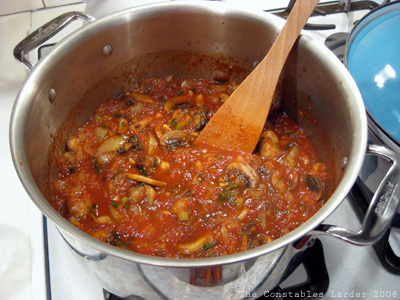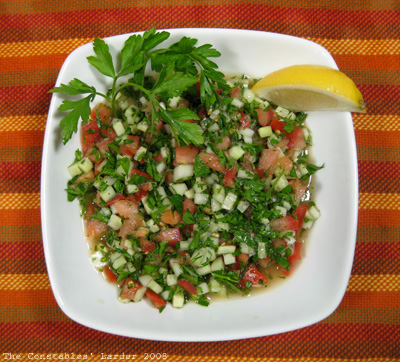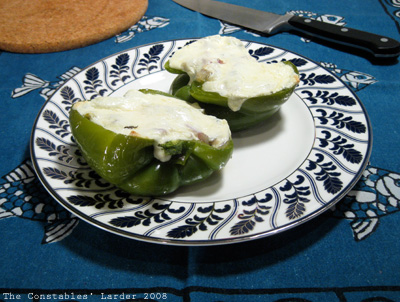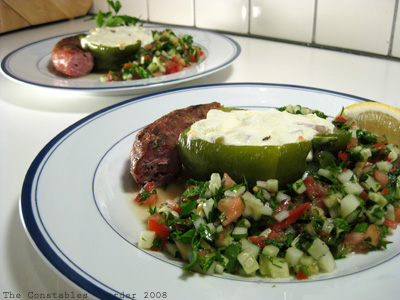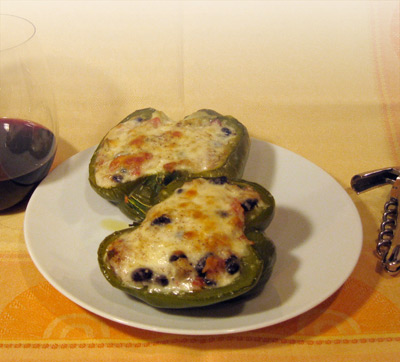
Flipping through a back issue of Bon Appetit (July 2003), I came upon a recipe for “pink pickled onions” that I just had to try. The magazine called for pickling spices and fresh rosemary, neither of which I had at hand, so I improvised the following adaptation working within the limits of my spice cabinet that day, sticking with spices that could be strained out (i.e. not ground).
1 red onion, sliced thin into rings
1 cup white wine vinegar
3/4 cup water
1/2 cup sugar
1 tbsp dried rosemary
1 tbsp salt
1 cinnamon stick
1 tsp cloves
1 tsp cumin seeds
1 tsp whole black peppercorns
2 dried bay leaves
In a medium saucepan, add the vinegar, water, sugar and all the sprices and bring to a boil, stirring until the sugar and salt dissolve. Reduce heat and simmer, covered, for about 10 to 15 minutes. Place a metal bowl underneath a fine strainer and pour the liquid through the strainer so that the spices are removed. Push the sliced red onions into the liquid in the bowl and let cool.
I had hungry hordes to feed (ok, only my wife and daughter but when they are peckish, even Genghis would run for cover), so I let sit for just under an hour while I prepped the rest of dinner. You can also cover and place in your fridge for longer.
P.S. dinner consisted of sandwiches made out of grilled, spicy (chorizo-based) sausages (sliced) which could be swapped out for vegetarian sausages (in that case, I would recommend adding a little kick like Thai chili sauce), the pickled onions, chopped romaine lettuce and natural greek yogurt as a condiment. I wished I had some Cuban black beans to serve with it.
